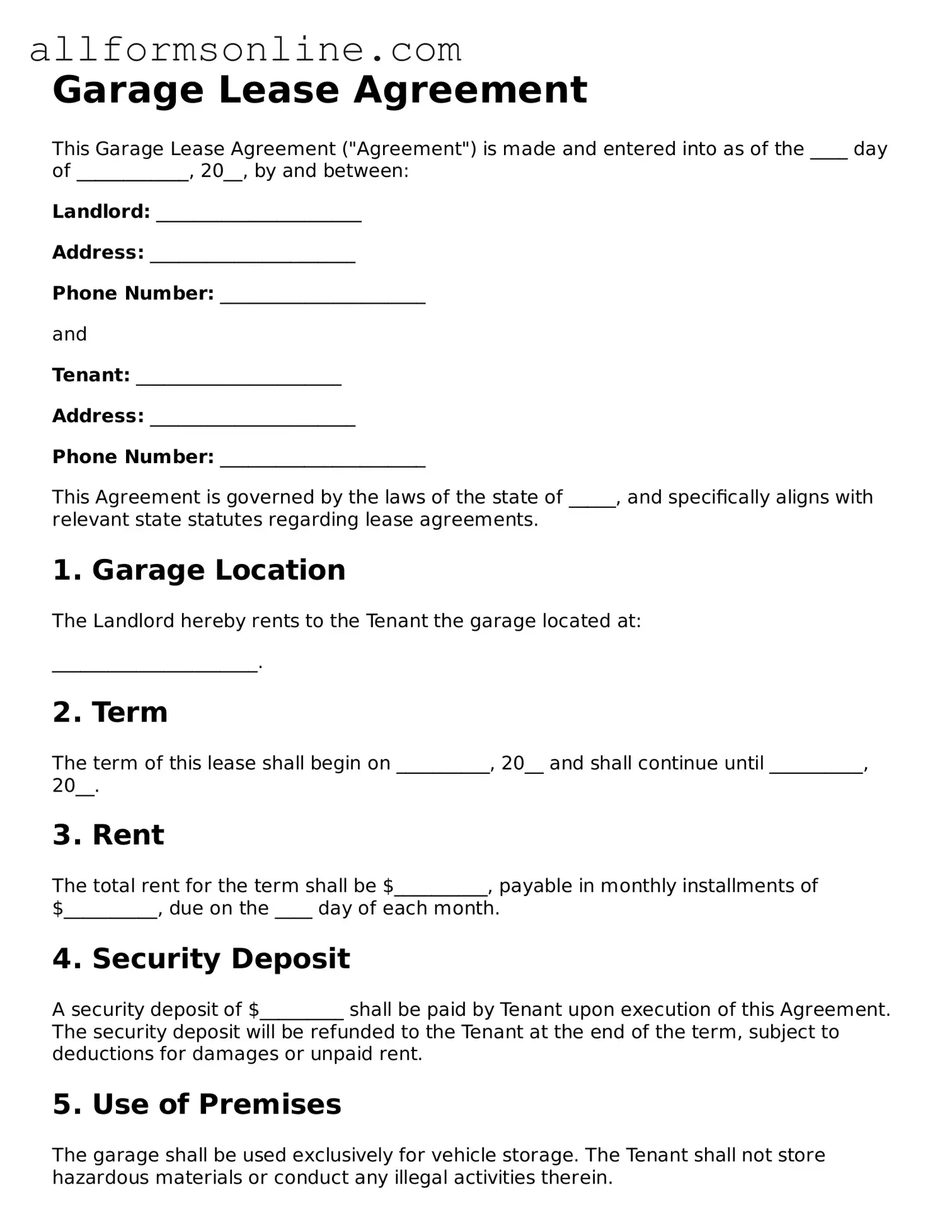What is a Garage Lease Agreement?
A Garage Lease Agreement is a legal document that outlines the terms and conditions under which a landlord allows a tenant to use a garage space. This agreement typically includes details such as the rental amount, duration of the lease, and responsibilities of both parties. It ensures that both the landlord and tenant have a clear understanding of their rights and obligations regarding the use of the garage.
What should be included in a Garage Lease Agreement?
Essential elements of a Garage Lease Agreement include the names of the parties involved, the address of the garage, the lease term, and the rental price. It should also specify the permitted uses of the garage, maintenance responsibilities, and any restrictions, such as whether the tenant can store hazardous materials. Including provisions for termination and renewal of the lease can also be beneficial.
How long is a typical Garage Lease Agreement?
The duration of a Garage Lease Agreement can vary widely. Some leases are month-to-month, offering flexibility to both parties. Others may be for a fixed term, such as six months or one year. The choice often depends on the needs of the landlord and tenant. It's important to clearly state the lease term in the agreement to avoid any confusion.
What happens if the tenant damages the garage?
If a tenant causes damage to the garage, the Garage Lease Agreement should outline the procedures for addressing such issues. Typically, the tenant may be responsible for repairs or compensating the landlord for the damages. This responsibility is usually detailed in the agreement, ensuring that both parties understand the consequences of any damage that may occur during the lease term.
Can a Garage Lease Agreement be terminated early?
Yes, a Garage Lease Agreement can often be terminated early, but the process depends on the terms outlined in the document. Many agreements include specific conditions under which either party can terminate the lease, such as breach of contract or failure to pay rent. It's crucial for both landlords and tenants to read these provisions carefully to understand their rights regarding early termination.
